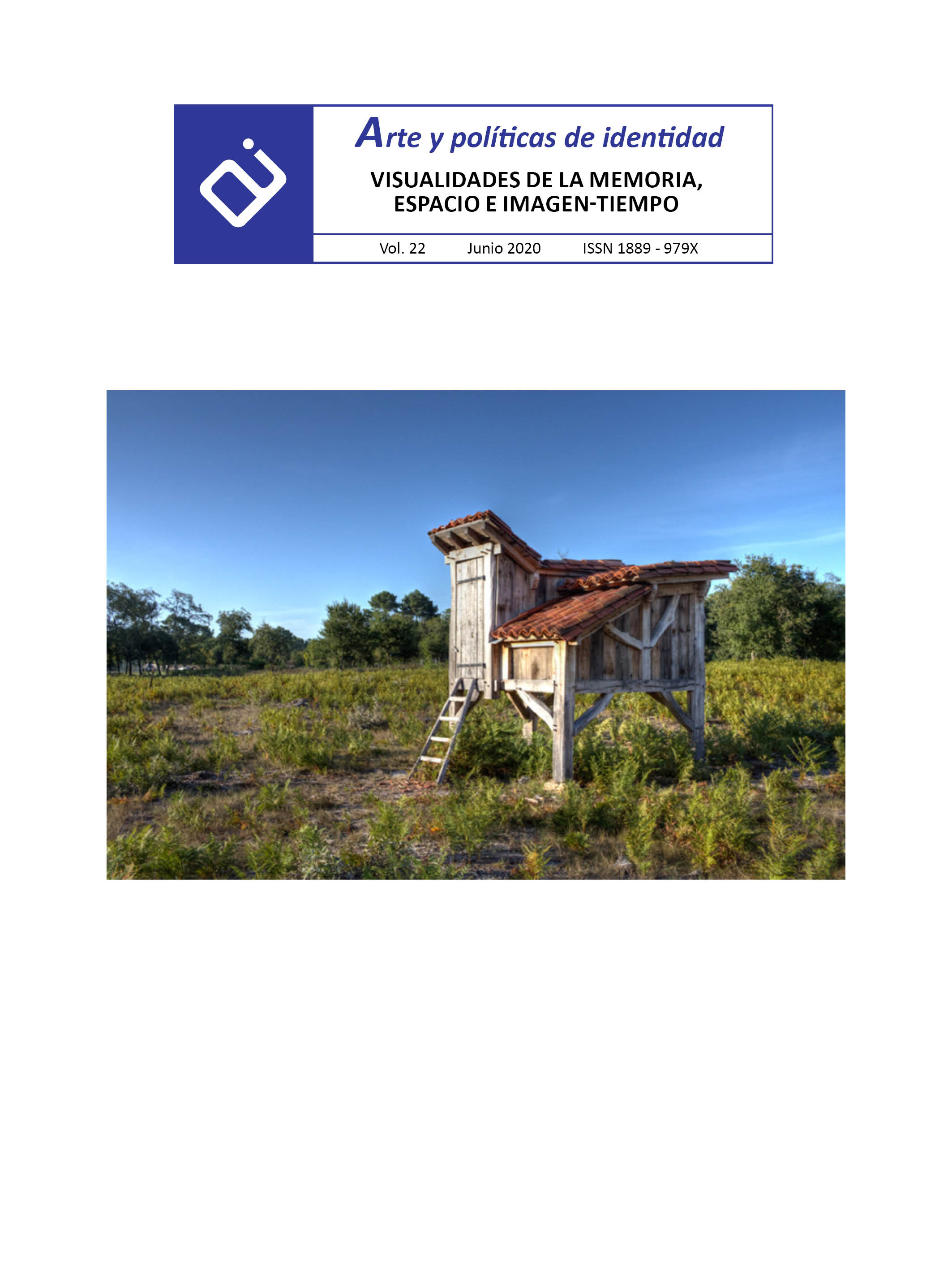The art education through the city in Gerhard Richter's painting: Materiality, memory and agency after World War II
Abstract
The present work approaches the work of Gerhard Richter from his relation with the representation of the city. Richter brings to the front a type of painting based on the interpretation of some European cities from the abstraction presented by the plants that make up their spaces. This disfigurement of the characteristic of a place connects the figurative tradition with the new gestural languages in the second half of the 20th century. The revisions of the city from the abstraction of its planes link with the memory of its ruins from the war conflicts of World War II and are related, in turn, to the fragmentary, the anonymous and the indifferent in them live. Forcing a reflection in iconic terms in full reconstruction of German historical memory, serving as an active methodology for the artistic education of individuals, favoring of emancipation of students in visual terms.
Downloads
-
Abstract627
-
PDF (Español (España))478
References
Aguirre, I. (2015). Hacia una narrativa de la emancipación y la subjetivación desde una educación del arte basada en la experiencia. Docencia, 57. 5-16.
Aguirre, I. (2018). Prefacio. En V. Murillo Ligorred, J. C. Resano López y N. Ramos Vallecillo (Coords), Educación Artística hoy: el reto en la sociedad de la imagen (pp. 7-9). Zaragoza: Prensas de la Universidad de Zaragoza.
Arendt, H. (1998). Los orígenes del totalitarismo. Madrid: Alianza Editorial.
Augé, M. (2017). Los no lugares. Barcelona: Gedisa.
Belz, C. (Directora) (2009). Gerhard Richter Painting.
Boehm, G. (1994). Was ist ein Bild? Munich: Fink Verlag.
Calderón, N; Hernández, F. (2019). La investigación artística. Un espacio de conocimiento disruptivo en las artes y en la universidad. Barcelona: Octaedro.
Clark, R. (1996). Art Education: Issues in Postmodernist Pedagogy. Reston: National Art Education Association.
Clark, G.A., Day, M.D. y Greer, W.D. (1987). Discipline-Based Art Education: Becoming students of art. The Journal of Aesthetic Education, 21(2), 130-193.
Dewey, J. (1949). El arte como experiencia. México: Fondo de Cultura Económica.
Dussel, I. y Priem, K. (2017). The visual in histories of education: a reappraisal, Paedagogica Historica, 53(6), 641-649.
García Varas, A. (2011). Filosofías de la imagen. Salamanca: Ediciones Universidad de Salamanca.
García Varas, A. (2013). Imágenes con poder: representaciones de la guerra. Referencia, sentido y actos de imagen. Enrahonar, 50, 11-29.
Gell, A. (1998). Art and agency: an anthropological theory.Oxford: Clarendon press. Goodman, N. (2013). Maneras de hacer mundos. Madrid: Antonio Machado.
Gumbretch, H.U. y Link-Heer, U. (2004). Eprochenschwellen und Epochenstrukturen im Diskurs der Literatur- un Sprachhistorie. Frankfurt: Suhrkamp.
Hernández, F. (2000). Educación y cultura visual. Barcelona: Octaedro.
Hernández, F. y Calderón, N. (2019). La investigación artística. Un espacio de conocimiento disruptivo en las artes y en la universidad. Barcelona: Octaedro.
Hernández, D. (2001). Las ciudades de Richter. Factótum, 26, 26-29.
Hernández, D. (2005). Pintura de apariencias. Gerhard Richter y las imágenes incompletas, en R. Piñero, D. Hernández y A. Notario (Coords.), Imágenes incompletas: Materiales de estética 1. Salamanca: Ediciones Universidad de Salamanca.
Huyssen, A. (1995). Twilight Memories: Marking Time in a Culture of Amnesia. Londres, Nueva York. Routledege.
Martínez, S. (2012). La antropología, el arte y la vida de las cosas. Una aproximación desde Art and Agency de Alfred Gell. AIBR. Revista de Antropología Iberoamericana, 7(2), 171-195.
Mitchell, W.J.T. (2009). Teoría de la imagen: ensayos sobre representación verbal y visual. Madrid: Akal.
Moxey, K. (2008). Los estudios visuales y el giro icónico. Estudios Visuales, 6, 8-23.
Murillo Ligorred, V. (2018). Dibujo infantil: etapas, retos y evolución. La implicación de los maestros en el aula. En V. Murillo Ligorred, J. C. Resano López y N. Ramos Vallecillo (Coords), Educación Artística hoy: el reto en la sociedad de la imagen (pp. 101-122). Zaragoza: Prensas de la Universidad de Zaragoza.
Rancière, J. (2002). La división de lo sensible. Estética y política. Salamanca: Consorcio Salamanca.
Rancière, J. (2010). El maestro ignorante: cinco lecciones sobre laemancipación intelectual. Barcelona: Laertes.
Rancière, J. (2010). El espectador emancipado. Castellon: Ellago.
Richter, G. (1992). Daily practices of painting. Berlin: Verlag.
Richter, G. (2003). Notas 1964-1965. G. Picazo y J. Ribalta (Eds.). Indiferencia y singularidad. Barcelona: Gustavo Gili.
Richter, G. (2009). Text. Writings, Interviews and Letters 1961–2007. London: Thames & Hudson.
Richter, G. (1962-actualidad). Atlas de fotografías, collages y bocetos.
Rorty, R. (1991). Contingencia, ironía y solidaridad. Barcelona: Paidós.
Schilling, J. (2003). El pintor Gerhard Richter. En Gerhard Richter. Una colección privada. Catálogo de exposición (pp. 15-27). Málaga: CAC.
Sebald, W. G. (2003). Sobre la historia natural de la destrucción. Madrid: Anagrama.
Trigg, D. (2009). The Place of Trauma: Memory, Hauntings, and the Temporallity of Ruins, Memory Studies, 2(1), 87-101.
Wittgenstein, L. (2008). Tractatus lógico-philosophicus. Madrid: Tecnos.
Wollheim, R. (1971). Art and its objects: An introduction to aesthetics. Nueva York: Harper and Row.
Zweite, A. (1999). El Atlas de fotografías, collages y bocetos de Gerhard Richter. En Fotografía y pintura en la obra de Gerhard Richter. Cuatro ensayos a propósito del Atlas (pp. 199-242). Barcelona: MACBA.
Works published in this journal are subject to the following terms:
- The Service of Publications from the University of Murcia (publishing house) keeps the published works’ copyrights, and favors and allows the reuse of these works under the license indicated in point 2.
- Works are published in the journal’s online edition under the license Creative Commons Reconocimiento-NoComercial-SinObraDerivada 3.0 España(texto legal). They can be copied, used, disseminated, transmitted and publicly exhibited, as long as: i) the author and original source of publication are cited (journal, publishing house and work’s URL); ii) they are not used for commercial purposes; iii) the existence and specifications of this license are mentioned.
3. Conditions for auto-file. It is allowed and encouraged that authors share electronically their pre-print version (the pre-reviewed version) and /or post-print version (the reviewed and accepted version) of their Works before the publication, since it promotes its circulation and dissemination. RoMEO color: green.










